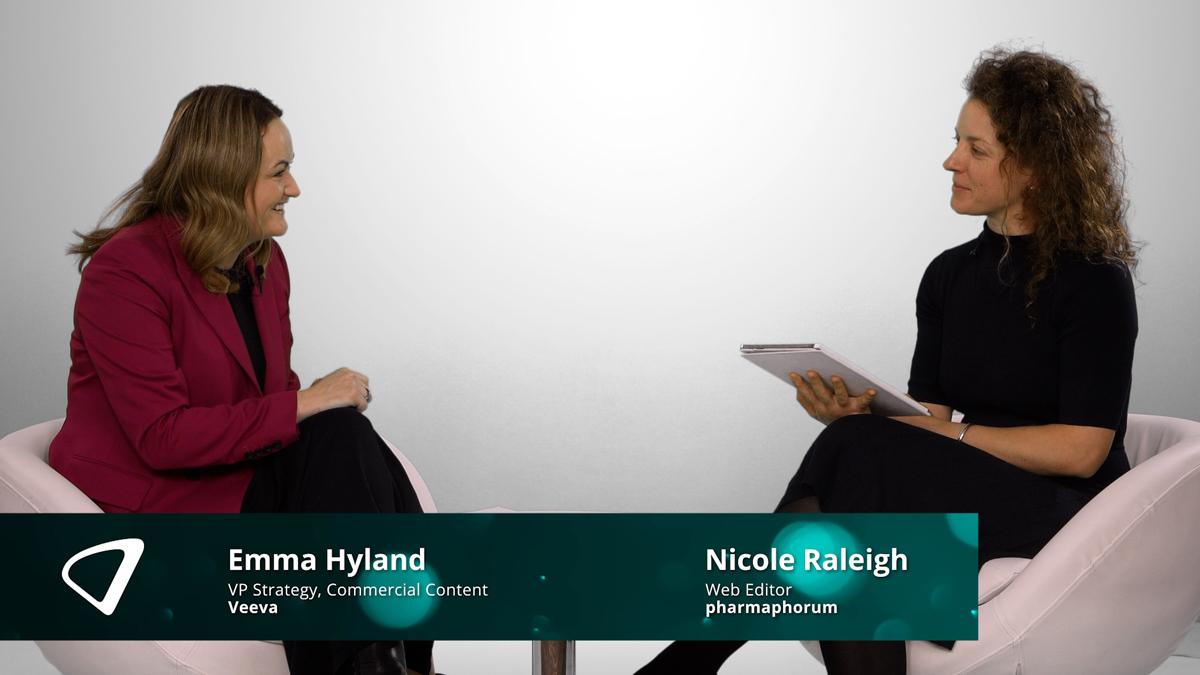Eliminate swivel chair processes to streamline claims management

Healthcare professionals (HCPs) rely on biopharma companies for accurate drug information. Out-of-date claims can damage both brand reputation and industry credibility. This puts pressure on marketing, and medical, legal, and regulatory (MLR) teams, to ensure every claim meets strict compliance standards.
Part of a brand team’s challenge ensuring accurate claims is they are stuck in the middle of multiple digital systems, like digital asset management (DAM) and content management systems (CMS), as well as various publishing tools. They move back and forth to access claims and distribute content in different channels – a “swivel chair” process. When claims change, it’s difficult to find and update everywhere that the claim exists.
A new approach to claims management is needed. Unifying digital content creation with MLR review can dramatically simplify approvals, claims tracking, and digital publishing. Ultimately, commercial and medical affairs organisations can significantly reduce compliance risk.
Speed MLR review and approval of compliant content
Biopharma brand teams typically manage multiple systems with distinct MLR workflows, making it complex and challenging for MLR teams to review and approve commercial claims and content.
Modern digital experience platforms (DXPs) solve this challenge by integrating with MLR tools, allowing brand teams to continue using their preferred systems without switching between tools. At the same time, this provides brands a common way to create HCP content and work with MLR teams.
By unifying authoring and MLR processes, DXPs enable marketing to easily work with MLR-approved components like text, images, and claims. Teams can quickly assemble these components into new polished assets and webpages, instead of starting from scratch.
This modular approach streamlines MLR reviews and reduces production costs across global brands. Marketing can confidently reuse compliant content, while MLR teams approve materials faster, knowing they incorporate pre-approved components.
Effectively control and track claims globally
Because internal marketing teams and external agencies use multiple systems to develop web pages, portals, and content, when claims change it’s nearly impossible to find and update content that includes that claim. This not only harms brand consistency, but more importantly also makes it harder to ensure compliance with various regulatory guidelines that vary by region.
A DXP streamlines claim management across digital channels by consolidating MLR-approved content into a shared asset library, tagged by brand, geography, and language. Marketers can easily access and track approved claims, references, and content modules.
With an MLR tool acting as a single source of truth for approved content, any time a claim changes it is automatically synchronised and updated across any piece of content created using a DXP. This ensures marketers always use the most current, compliant versions of claims and eliminates outdated content.
Marketing and MLR teams both benefit. Marketers gain real-time claim accuracy without manual updates, while MLR teams streamline workflows, processes, and collaboration across brand and digital marketing teams, reducing risk for commercial and medical affairs organisations.
Streamline publishing and get content to HCPs faster
Digital-savvy HCPs are now the norm, with doctors preferring to engage biopharma brands and sales reps in a variety of digital channels. Digital experiences and content are more important than ever to engage and educate HCPs on the latest treatments for their patients.
Brand and marketing teams juggle multiple systems to locate, download, and assemble text, images, and claims. This makes it hard to deliver compliant content to market fast enough and get physicians the timely and relevant information they need.
A unified digital authoring and MLR process streamlines content creation to publish compliant materials across channels faster. Marketers can access MLR-approved claims, images, and modular assets to create and update web portals and pages – all without switching between systems. Teams can also limit access through role-based permissions to better control use of various content and claims.
Powering a new model of digital experience management
Declining in-person access to HCPs has made omnichannel digital engagement essential. But biopharma companies struggle with inefficiencies when managing claims and publishing across multiple systems.
DXPs can now eliminate swivel chair processes. Commercial organisations can integrate existing systems with a DXP and have one unified interface to create and publish digital experiences. No more switching between multiple tools.
Looking ahead, biopharma organisations will use modular digital experience platforms (DXPs) to plug-and-play various systems—DAM, CMS, CDP, CRM, analytics—and consolidate the entire digital ecosystem. This will help unify digital content creation with MLR review to simplify MLR reviews and approvals, claims tracking, and multichannel publishing.
Ultimately, this unified approach will help companies enhance content delivery across territories, brands, sites, and channels, improving both HCP engagement and patient experiences.












